Top 15 Most Beautiful Historical Sites in Singapore
Singapore, being a country with four official languages (English, Malay, Mandarin, and Tamil), owes much of its diverse culture to its turbulent past. ... read more...Singapore, originally known as Temasek, was a commercial port influenced by both the Majapahit Empire and Siamese kingdoms in the 14th century. It sank into obscurity for the next two centuries or more after being destroyed by the Portuguese in the 16th century. It wasn't until 1819 that it was reopened as a British trading post that it began to be renovated. After suffering the horrors of war during WWII, the country gained independence in 1965 and has since risen to become one of Asia's fastest-growing superpowers. Today, let's follow Toplist to discover the most beautiful historical sites in Singapore.
-
The Convent of the Holy Infant Jesus Middle Education School (CHIJMES) is a historic building complex in Singapore that began as a Catholic convent called the Convent of the Holy Infant Jesus (CHIJ). The facility is located on Victoria Street in the Primary Area, Singapore's central business center, in the Downtown Core.
With an acquired Caldwell Home built in 1840–1841, an acquired Convent Orphanage house in 1855, the Convent of the Holy Infant Jesus Chapel in 1904, and an acquired hotel complex for the girls' school in 1933, the complex has been operated as a Catholic convent since 1852. Caldwell House, which now serves as a wedding venue, and the Gothic-style church, renamed CHIJMES Hall, which now serves as a function hall and wedding venue, have both been designated as national monuments. In 1996, the complex was renovated for commercial use as an eating, shopping, and entertainment center, complete with ethnic restaurants, stores, and a function hall that can host musicals, recitals, theatrical events, and weddings.
CHIJMES' amazing architectural design is, of course, still as fascinating as ever. In terms of beauty and style, it definitely stands out. It's no surprise that it's one of the most beautiful historical sites in Singapore.
Opening Hours:24 Hours
Access:Bras Basah MRT Station, Exit B/ City Hall MRT Station, Exit D
Address:30 Victoria Street, Singapore 187996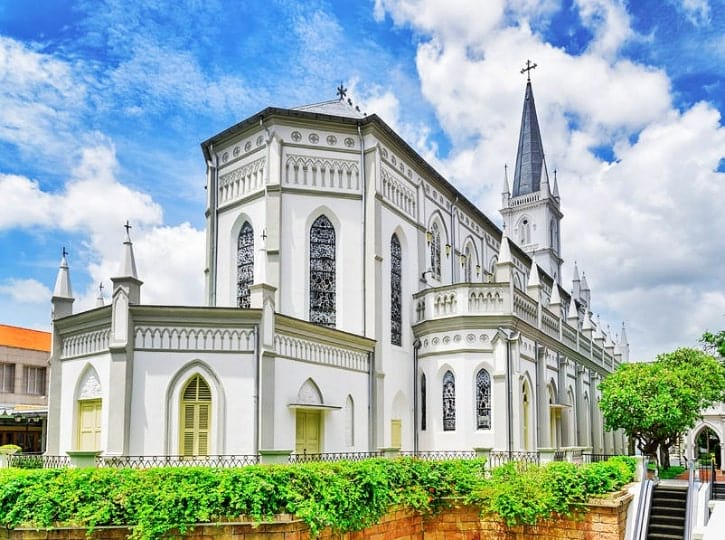
Photo: preparetravelplans 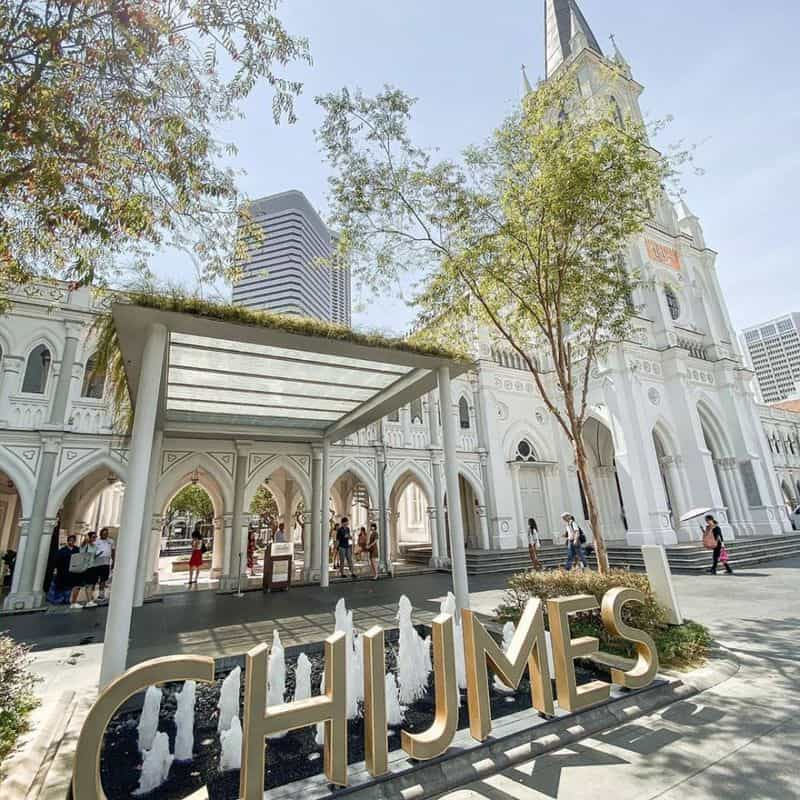
Photo: hoangviettravel -
In Singapore, there are many historical museums, however the National Gallery Singapore is one of a kind. After converting the previous Supreme Court and City Hall, it opened in 2015. It houses Southeast Asia's largest modern art collection when the two structures are merged.
There are now around 8,000 artworks on show. These aren't just from Singapore; they're from all over the world. Discover the works of Liu Kang, Chen Chong Swee, and Georgette Chen, among others. Also, don't miss out on the art pieces created by foreign artists from all over the world.
There are engaging activities for people of all ages in addition to the magnificent exhibitions. This is unquestionably an excellent option for art and history buffs. It's a fantastic method to learn more about the country's history and that of its neighbors.
Opening Hours:10:00 AM – 7:00 PM
Access:City Hall MRT Station, Exit B
Address:1 St Andrew’s Road, Singapore 178957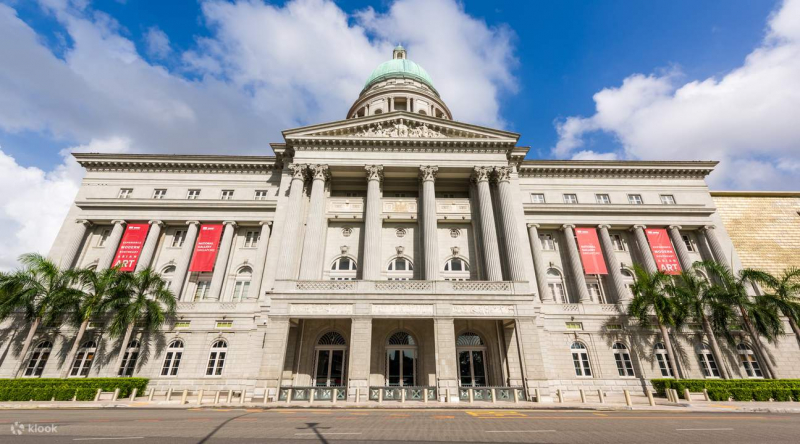
Photo: klook 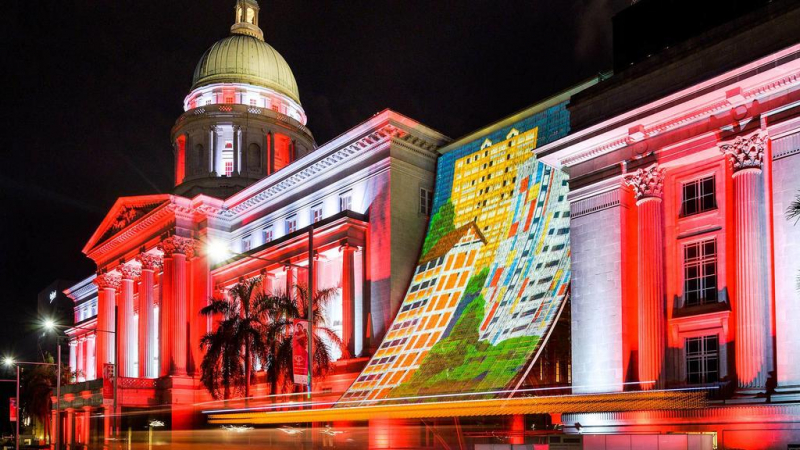
Photo: culturalheritageonline -
The Old Hill Street Police Station is more than just a fascinating piece of architectural history. This colorful tower, which is close to Clarke Quay in Singapore, has a long and illustrious history. It was erected in 1934 and served as the Singapore Police Force's previous station. It was also the first jail in the country.
This 6-story structure has a lovely blend of blue, green, red, and yellow. From the first to the fourth floor, there are 927 windows with the same amount of color. The fifth and sixth floors, on the other hand, feature darker colors to emphasize the top balconies.
You can't miss this historical monument with its vivid fusion of colors. It'll make a beautiful backdrop for your shots. So, if you're searching for a vibrant landmark in the heart of the city, this is a well-known choice.
Opening Hours:24 Hours
Access:Clarke Quay MRT Station, Exit E
Address:140 Hill Street, Singapore 179369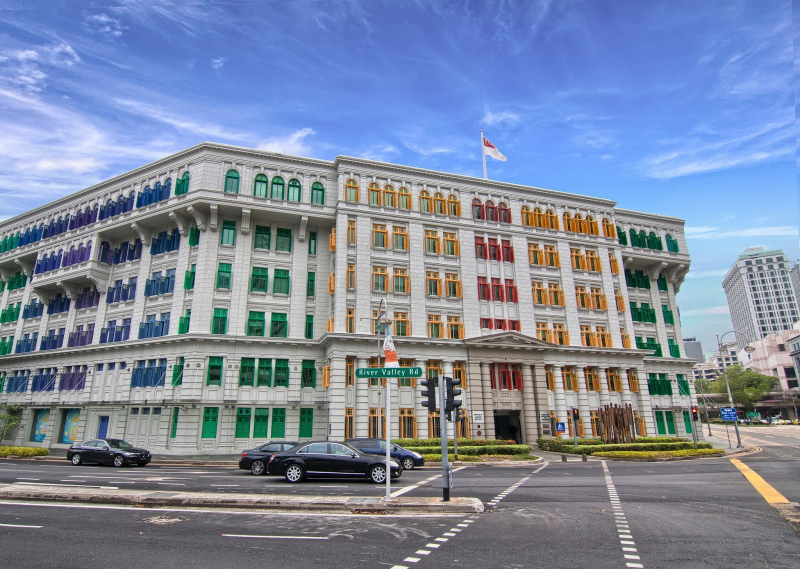
Photo: digitalkaleidoscope 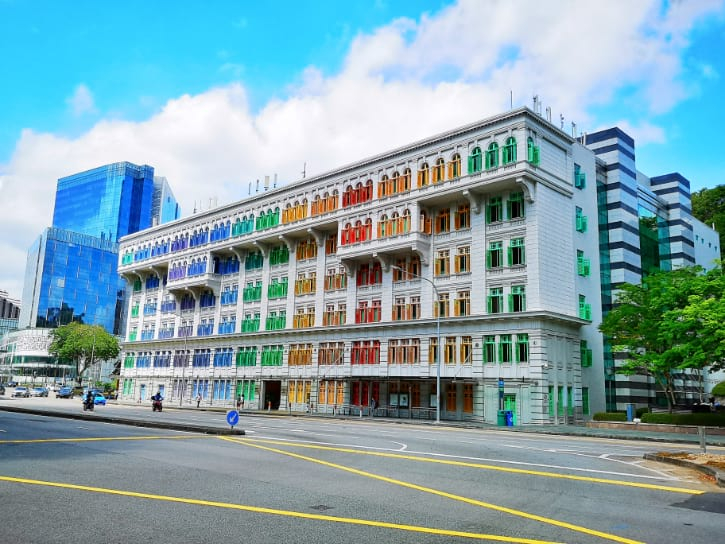
Photo: preparetravelplans -
These pastel-colored structures aren't only meant to be eye-catching. Peranakan Houses are an important element of Singapore's rich history.
The Peranakan are descendants of Chinese people who arrived in Singapore in the 15th century. This particular location used to be a large stretch of coconut farms. It has evolved into a residential community over the centuries.
Take a stroll down Joo Chiat Road to get a sense of the traditional communities' way of life. Each of these old dwellings exemplifies the Peranakan people's particular culture.The Peranakan Houses are currently being turned into houses, hotels, and stores. Even with the changes, it's difficult to deny the cultural significance of these old houses. When you see these houses for the first time, you must also admit that they are one of the most beautiful historical sites in Singapore.
Access: Take MRT to Dakota MRT Station and then catch the bus 33 to Peranakan Houses.
Address:287 Joo Chiat Road, Singapore 427540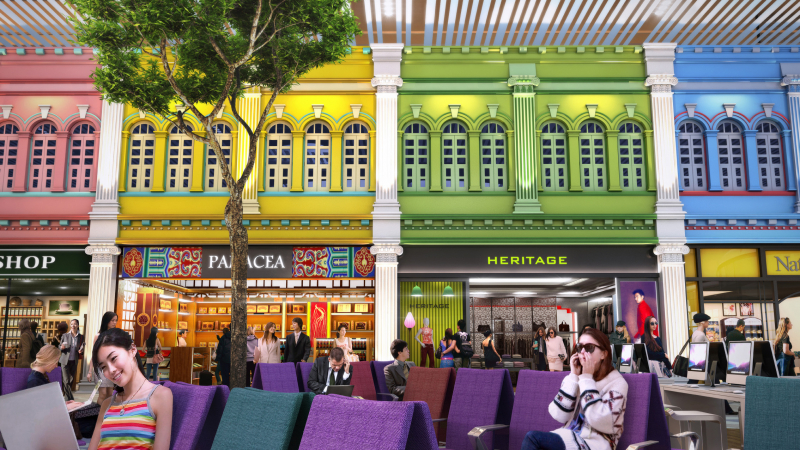
Photo: ommons.wikimedia.org 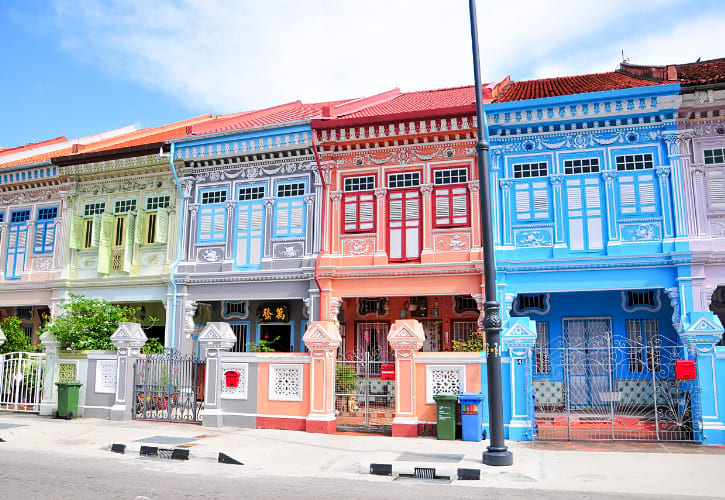
Photo: preparetravelplans -
The Civil Defence Heritage Gallery is home to a fantastic collection of fire vehicles and other fire apparatus. It's housed in the Central Fire Station, which dates back to the nineteenth century.
Explore the fire department's spectacular exhibitions on the first floor. Continue to the second floor for some interactive and visual activities. You'll learn about some noteworthy rescue missions carried out by retired firefighters from across the country. Video demonstrations of various firefighting techniques are also available.
This is the place to go if you want to learn more about Singapore's firefighting history. What's the nicest part about going to this museum? These exhibitions and demonstrations are completely free!
Opening Hours:10:00 AM – 5:00 PM (Closed on Monday)
Access:Clarke Quay MRT Station, Exit E
Address:62 Hill Street, Singapore 179367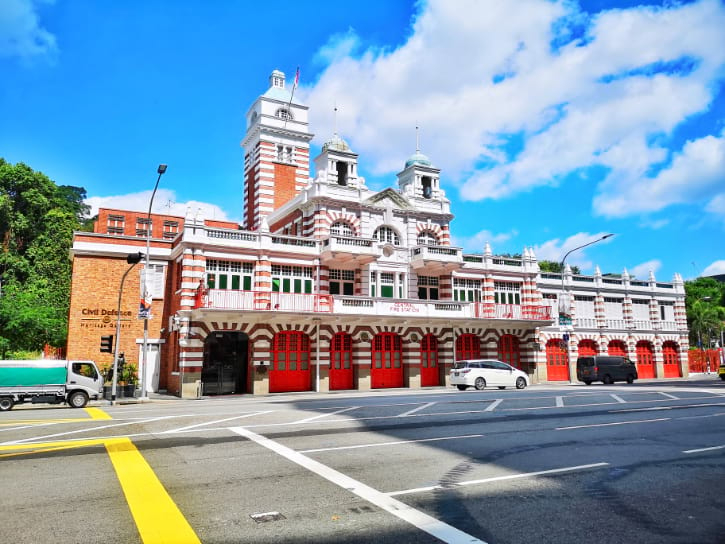
Photo: preparetravelplans 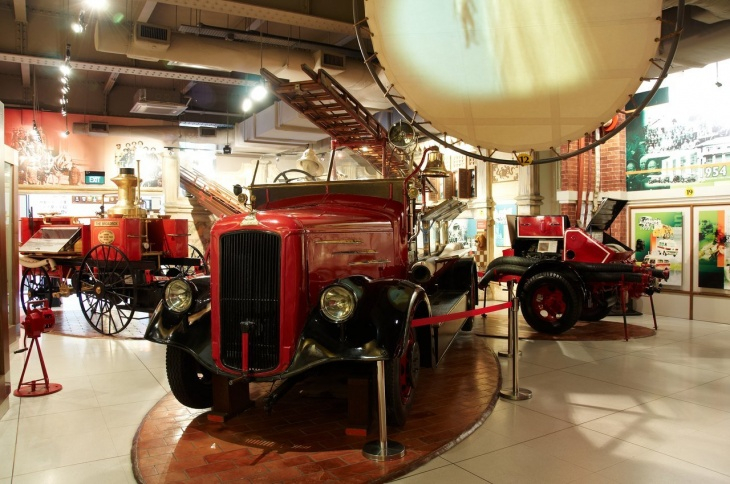
Photo: culturalheritageonline -
Tan Teng Niah, located on the modern Kerbau Road, is a cultural gem that deserves to be recognized. It's one of the several 19th-century private villas erected in the area. Tan Teng Niah, the local businessman who built the structure, was given the name.
However, unlike other homes, this lovely two-story home has endured the test of time. It is, in fact, the last known Chinese Villa in the area. So, if you're looking for the top things to do in Little India, this is one you shouldn't overlook.
Through its architectural design, you can get a peak of Chinese and Indian cultures. Don't forget to admire Tan Teng Niah's vibrant colors from afar.
Opening Hours:24 Hours
Access:Little India MRT Station, Exit E
Address:37 Kerbau Road, Singapore 219168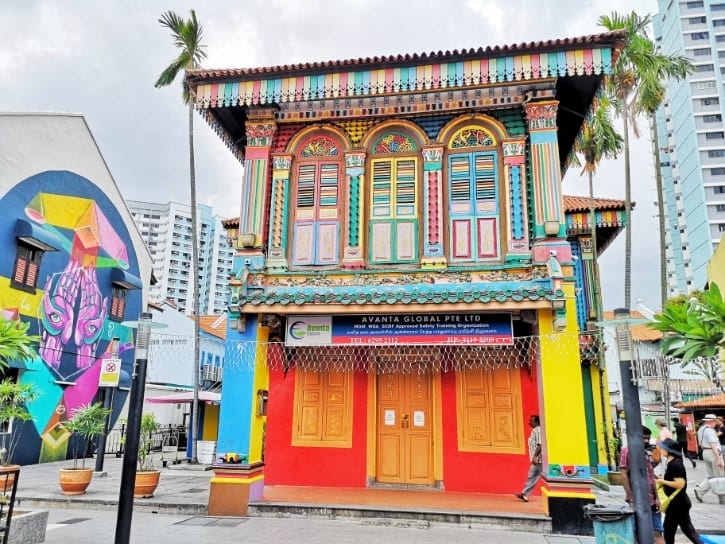
Photo: preparetravelplans 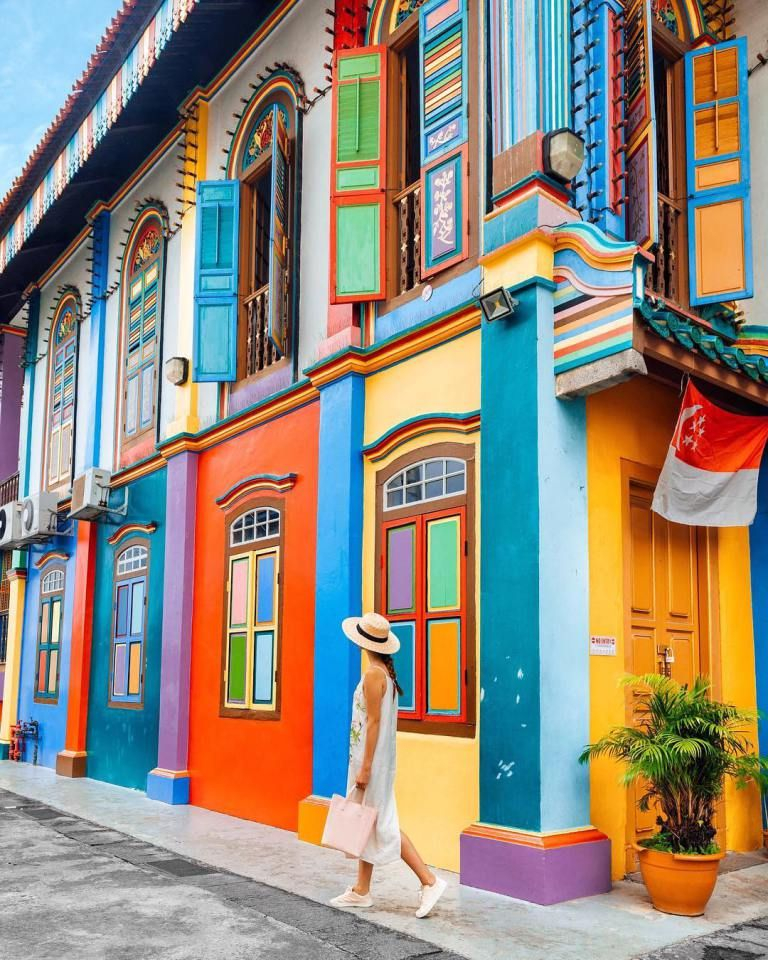
Photo: pinterest -
The Victoria Theatre and Concert Hall is an architectural marvel that exudes elegance. It was originally constructed in the 18th century as a single structure. Another structure was erected in 1909 to complete the ensemble.
The exquisite exteriors of this elegant structure continue to astound visitors today. Look at the palace-like attraction, which serves as a cultural hub for both local and foreign artists.
The cultural center has about 600 seats, with another 600 in the performance hall. Because of its size, it can host the majority of the country's theatrical productions.
If you like cultural presentations and neoclassical styles, you should pay this venue a visit. It is unquestionably a must-see heritage attraction in Singapore.
Opening Hours:10:00 AM – 9:00 PM
Access:Raffles Place MRT Station, Exit H
Address:9 Empress Place, Singapore 179556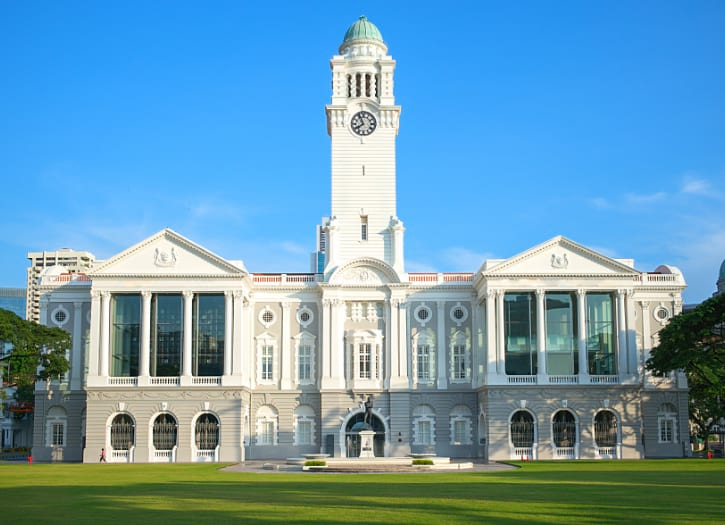
Photo: preparetravelplans 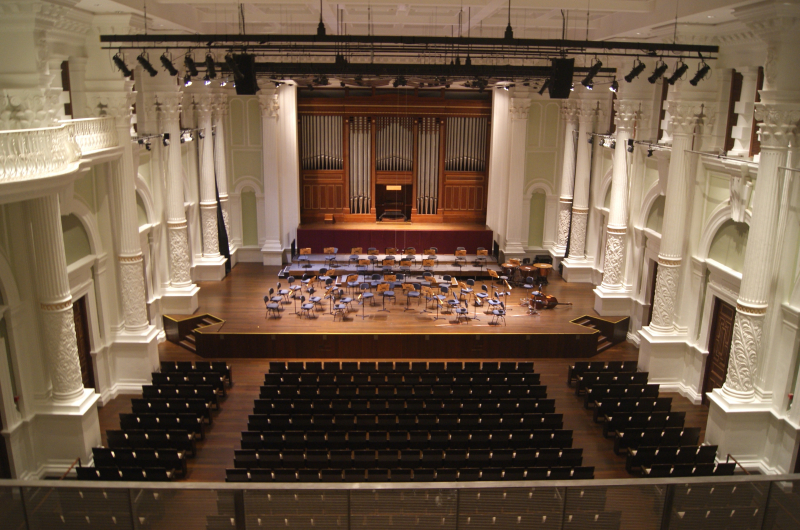
Photo: wikiwand -
The old St. Andrew's Cathedral is surrounded by modern structures. It has been the principal cathedral of the Anglican Diocese in the county since 1836. It is one of Singapore's national monuments due to its historical significance.
Its beautiful front is also one of the reasons for its popularity. It's easy to be pulled to this lovely landmark, which is dressed in white and gray. Even if you are not an Anglican, you are invited to visit and admire the beautiful designs.
The Anglican cathedral's breathtaking tones of white and blue will astound you once you step inside. The interior of the church is without a doubt a piece of art.
Opening Hours:9:00 AM – 6:00 PM
Access:City Hall MRT Station, Exit B
Address:11 St Andrew’s Road, Singapore 178959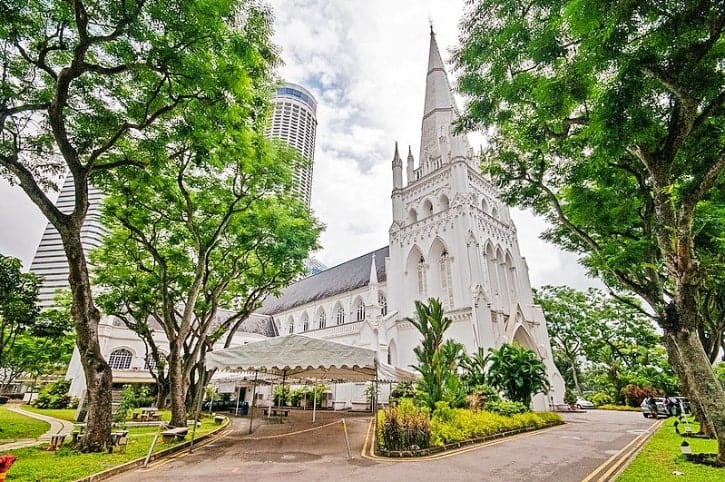
Photo: preparetravelplans 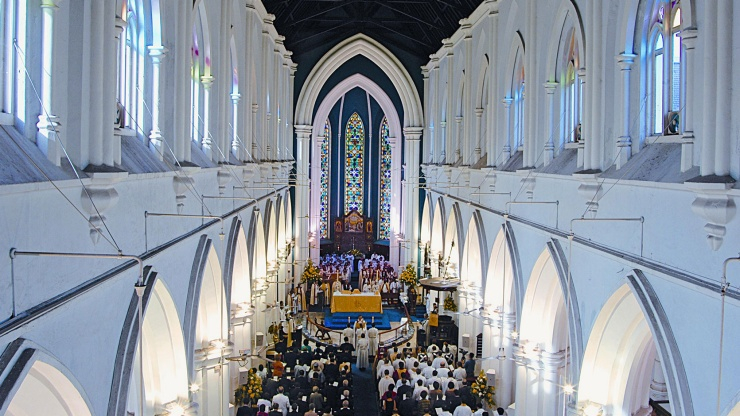
Photo: visitsingapore -
The Sultan Mosque, with its golden domes, is a spiritual landmark that attracts a lot of attention. It was originally erected for Singapore's first sultan, Sultan Hussein Shah, in 1824. As a result, it has become one of Singapore's most well-known historical landmarks.
The mosque now serves as the focal point for the country's Muslim community. It is also unique in that it incorporates both Islamic and Indian customs.
Apart from its historical significance, it is well-known for its striking exterior. Admire the onion-shaped domes, which are ornately embellished with glass bottles from various Muslim countries.
So, if you're still trying to figure out what to do in Bugis, this is a fantastic alternative. Its magnificent architectural designs will never let you down.
Opening Hours:
- Monday to Thursday: 10:00 AM – 12:00 PM / 2:00 PM – 4:00 PM
- Friday2:30 PM – 4:00 PM
- Saturday10:00 AM – 12:00 PM2:00 PM – 4:00 PM
- Closed on Sunday and Public Holidays
Access:Bugis MRT Station, Exit B
Address:3 Muscat Street, Singapore 198833
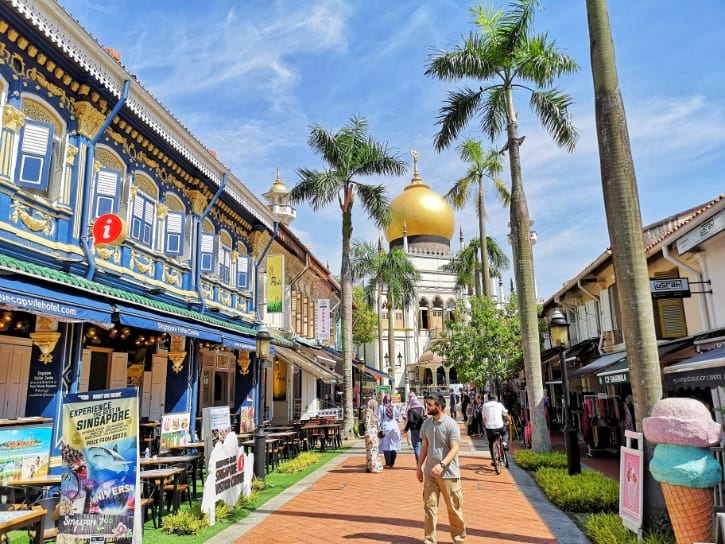
Photo: preparetravelplans 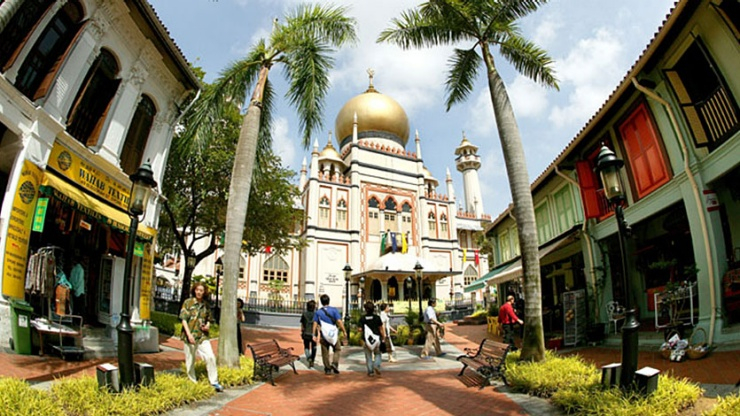
Photo: visitsingapore -
Thian Hock Keng Temple is Singapore's oldest Chinese temple and is well worth a visit. It dates back to the 1800s and is a cultural marvel. A group of sailors built the temple as a thank you for their safe trip. It was dedicated to Mazu, the Chinese sea goddess.
Explore this religious site that exemplifies the diversity of Chinese culture. You can worship inside the temple in addition to capturing true Chinese culture.
If you still have time, check out some other sights in the vicinity. There are a plethora of exciting things to do in Chinatown when you arrive.Opening Hours: 7:30 AM – 5:30 PM
Access: Telok Ayer MRT Station, Exit A
Address: Thian Hock Keng, 158 Telok Ayer Street, Singapore 068613
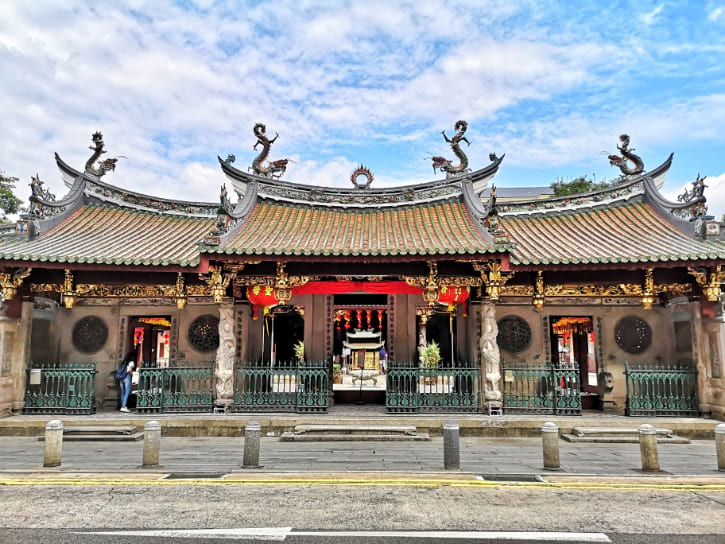
Photo: preparetravelplans 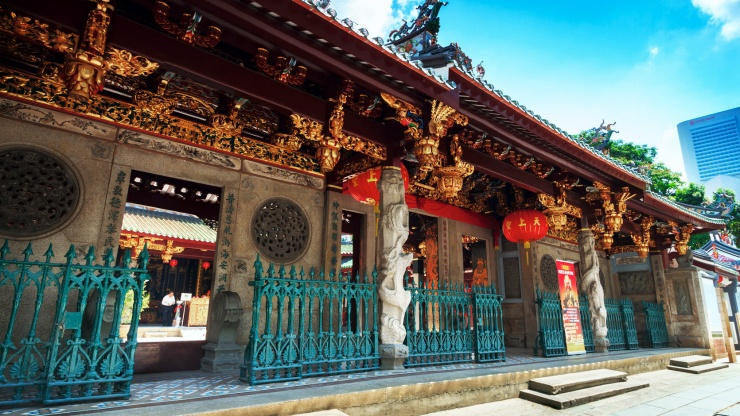
Photo: visitsingapore -
The Sri Mariamman Temple is the oldest Hindu temple in Singapore. Built in the Dravidian style, it is an agamic temple. The temple, which is located at 244 South Bridge Road in Singapore's central Chinatown district, serves the city-Hindu state's and Tamil communities. The temple has been designated as a National Monument and is a popular tourist destination due to its architectural and historical value. The Hindu Endowments Board, a statutory board under the Ministry of Community Development, Youth and Sports, oversees Sri Mariamman Temple.
The temple is also recognized for its vibrant colors and elaborate embellishments. While going through Chinatown, you can't help but notice the vivid exterior. All of this contributes to the one of the most beautiful historical sites status in Singapore, most magnificent Hindu temples.
Naraina Pillai erected the Sri Mariamman Temple in 1827, eight years after the East India Company established a commercial settlement in Singapore. Pillai was a Penang government employee who landed in Singapore in May 1819 with Sir Stamford Raffles on his second visit to the island. Pillai went on to build the first construction company on the island, as well as a textile business. He quickly made a name for himself in the commercial world and was recognized as a leader in the Indian community.
Opening Hours:Morning: 5:30 AM – 12:00 PMEvening: 6:00 AM – 9:00 PM
Access:Chinatown MRT Station, Exit A
Address:244 South Bridge Road, Singapore 058793
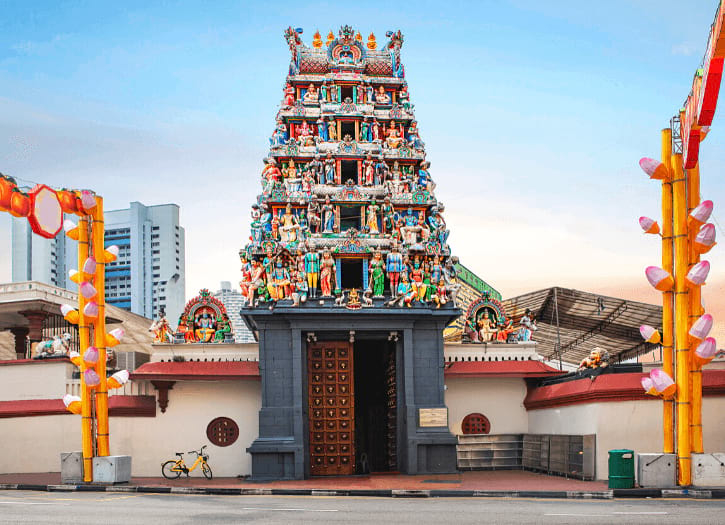
Photo: preparetravelplans 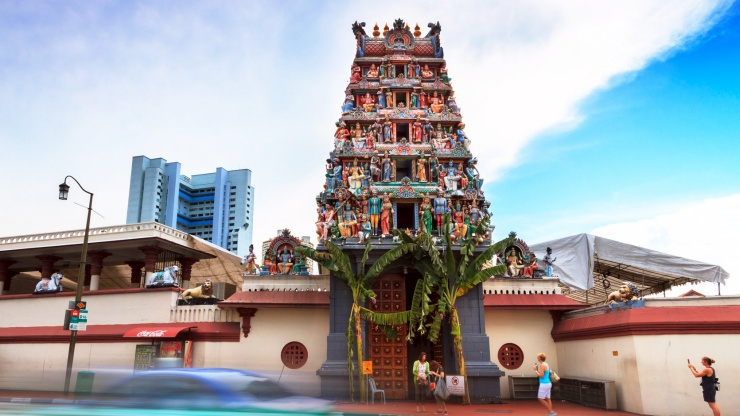
Photo: visitsingapore -
Fort Canning Park contains a significant piece of the country's history. It was the home of 14th-century rulers long before its military traces. It later served as the Far East Command Center's headquarters, as well as the British Army Barrack. During the 1942 battle, it was also here that the British surrendered to the Japanese invaders.
You'll discover more about the country's military endeavors on this 18-hectare area. Explore the vast park, which is home to historical exhibitions, beautiful gardens, and gorgeous structures. It's also a lovely area to trek and snap pictures because it's perched on a little hill.
If you're a history geek or a nature lover, you should definitely add this to your list of Singapore's must-see historical monuments. Because of its fascinating history and beautiful scenery, it's a wonderful site to visit.
Opening Hours:24 Hours
Access:Fort Canning MRT Station, Exit B
Address:River Valley Road, Singapore 179037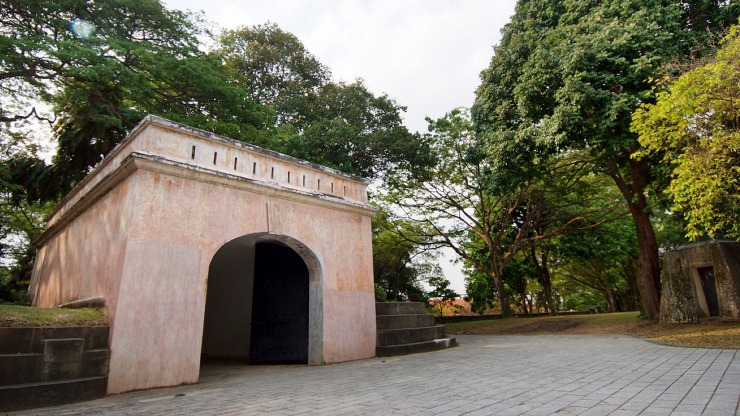
Photo: visitsingapore 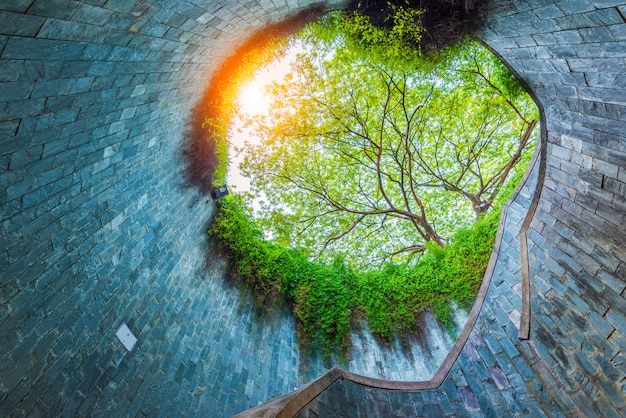
Photo: dulichsingapore -
Fort Siloso is a well-known historical monument in Singapore that will take you on a beautiful journey. Built in the 18th century, it functioned as the country's defense bastion until 1965.
As a result, it contains a wealth of fascinating WWII information in the form of antique equipment and instruments. Explore the barracks, command post, museum, and surrender chambers for artifacts.
The magnificent seaside vistas of Fort Siloso, of course, are hard to overlook. It takes place on an island with beautiful blue vistas and lush greenery. After that, you can go on a fun-filled trip in Sentosa by visiting various attractions.Opening Hours:10:00 AM – 6:00 PM
Address:Siloso Road, Singapore
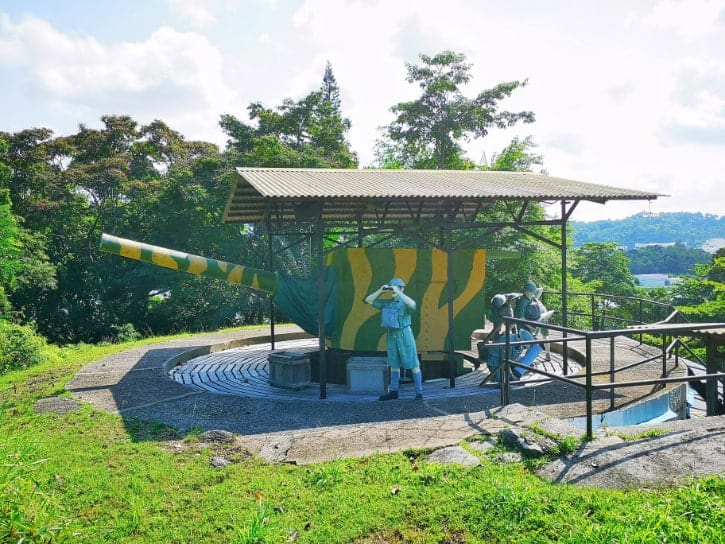
Photo: preparetravelplans 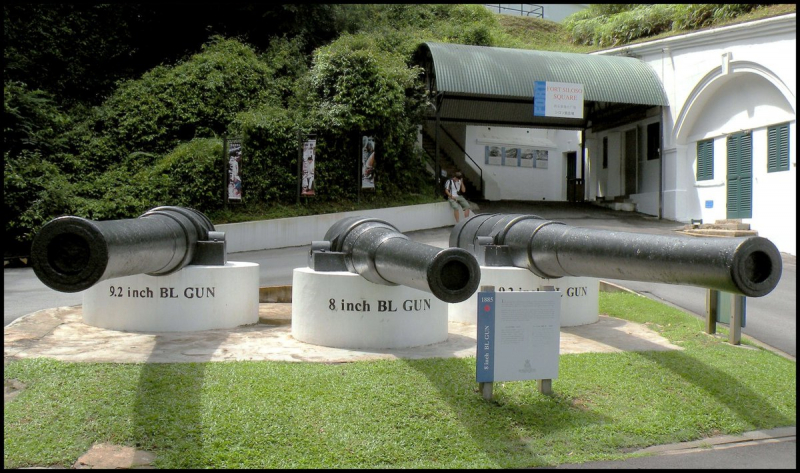
Photo: twitter -
During the Japanese occupation of Singapore in World War II, the Kranji War Cemetery was established as a hospital burial ground.
Before 1939, the Kranji area was a military camp, and it housed a massive munition depot during the Japanese invasion of Malaya. The Japanese entered the Johore Straits in force on February 8, 1942, landing at the entrance of the Kranji River, just two miles from where the military cemetery presently sits.
They began an attack between the river and the causeway on the evening of February 9th. During the next few days, furious warfare erupted, with many of the battles being fought hand to hand, until their much superior troops and air power forced a retreat.
Following the island's collapse, the Japanese erected a prisoner of war camp in Kranji, and a hospital at Woodlands was subsequently established nearby.
Following the war, the hospital burial ground was converted into a veterans' cemetery, and today, Kranji War Cemetery in Singapore's Kranji district contains 4,458 marked graves.
The servicemen and women who fought for Singapore's independence during World War II are buried here, with about 900 of them unidentified. Kranji War Cemetery also has 64 World War I graves, many of which were relocated to the cemetery at a later period.
Some of Singapore's presidents are buried in Kranji War Cemetery, including the country's first two presidents, Inche Yusuf bin Ishak and Benjamin Henry Sheares. The Kranji War Cemetery is located next to the Kranji War Memorial, which honors soldiers who served Singapore during WWII.
Opening Hours:8:00 AM – 6:30 PM
Address:9 Woodlands Road, Singapore 738656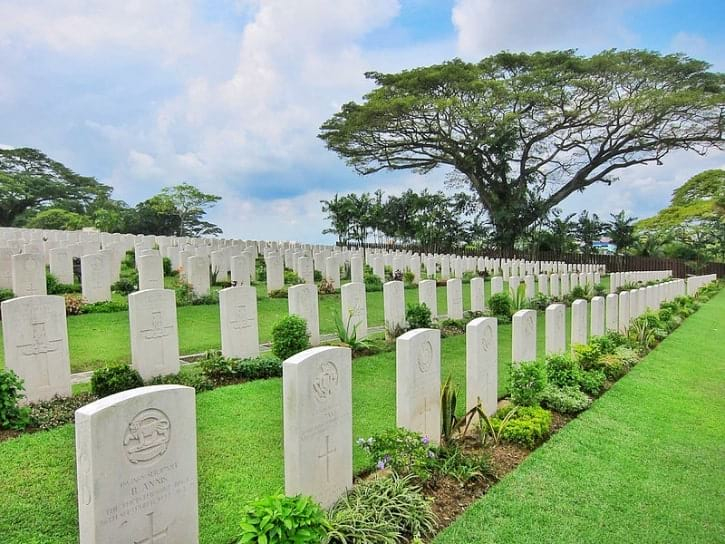
Photo: preparetravelplans 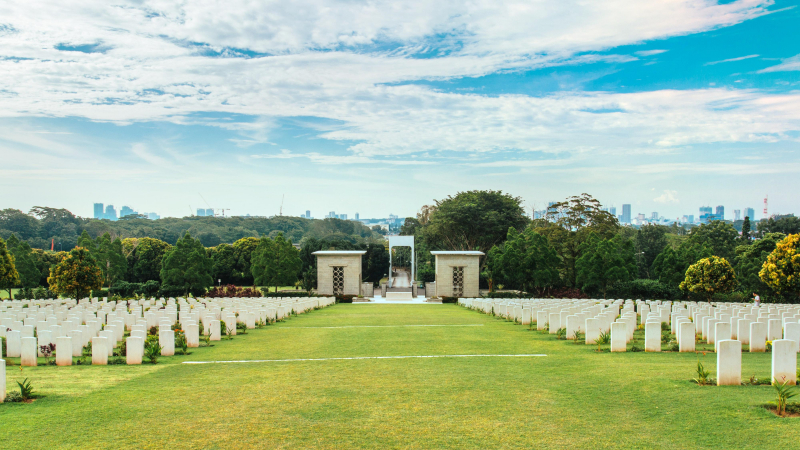
Photo: trip.com -
The Civilian War Memorial, also known as the Memorial to the Civilian Victims of the Japanese Occupation, is a war memorial and heritage landmark in Singapore, located near to the Esplanade MRT station. It was constructed in honor of the residents who died during the Japanese occupation of Singapore during WWII.
The Civilian War Memorial is located on peaceful parkland near Singapore's Padang and City Hall, in the midst of heavy city traffic. It is usually simple to notice in most backdrops surrounding the CBD landscape because it is located within the War Memorial Park at Beach Road within the Central Area, Singapore's central business district. On August 15, 2013, it was designated as the 65th national memorial.
Make sure to put this on your schedule because of its historical significance. It’s one of the best ways to acknowledge the sacrifices of the victims of the Japanese regime.
Opening Hours:24 Hours
Access:Esplanade MRT Station, Exit E
Address:Bras Basah Road and Beach Road intersection, Singapore 189701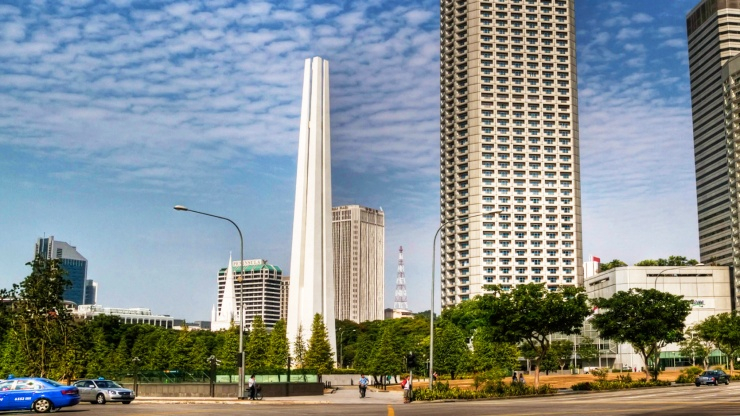
Photo: visitsingapore 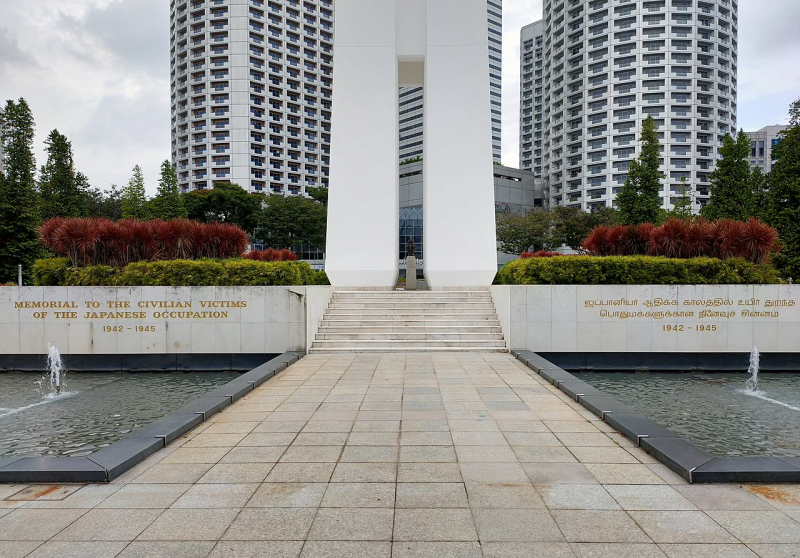
Photo: commons.wikimedia.org




































